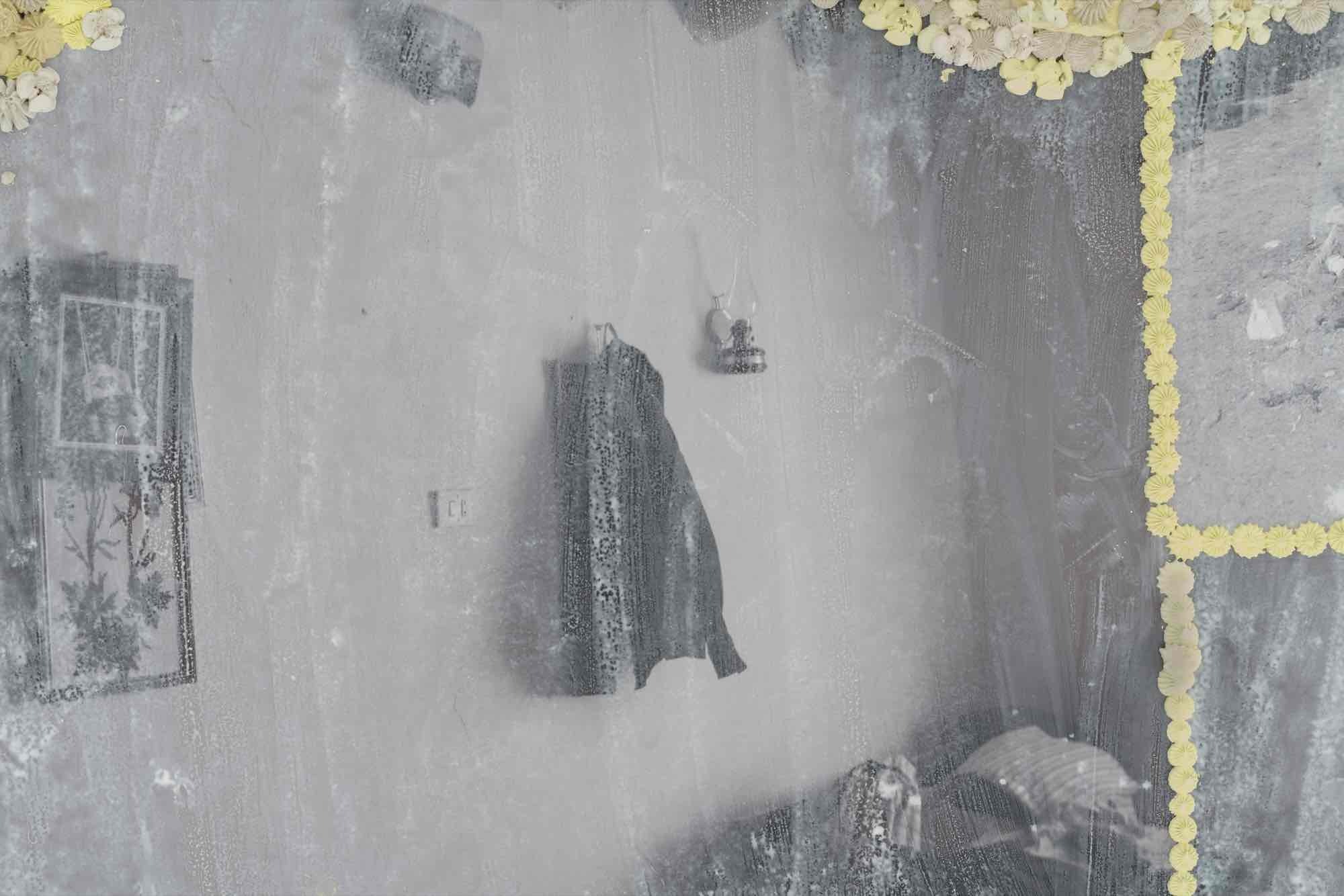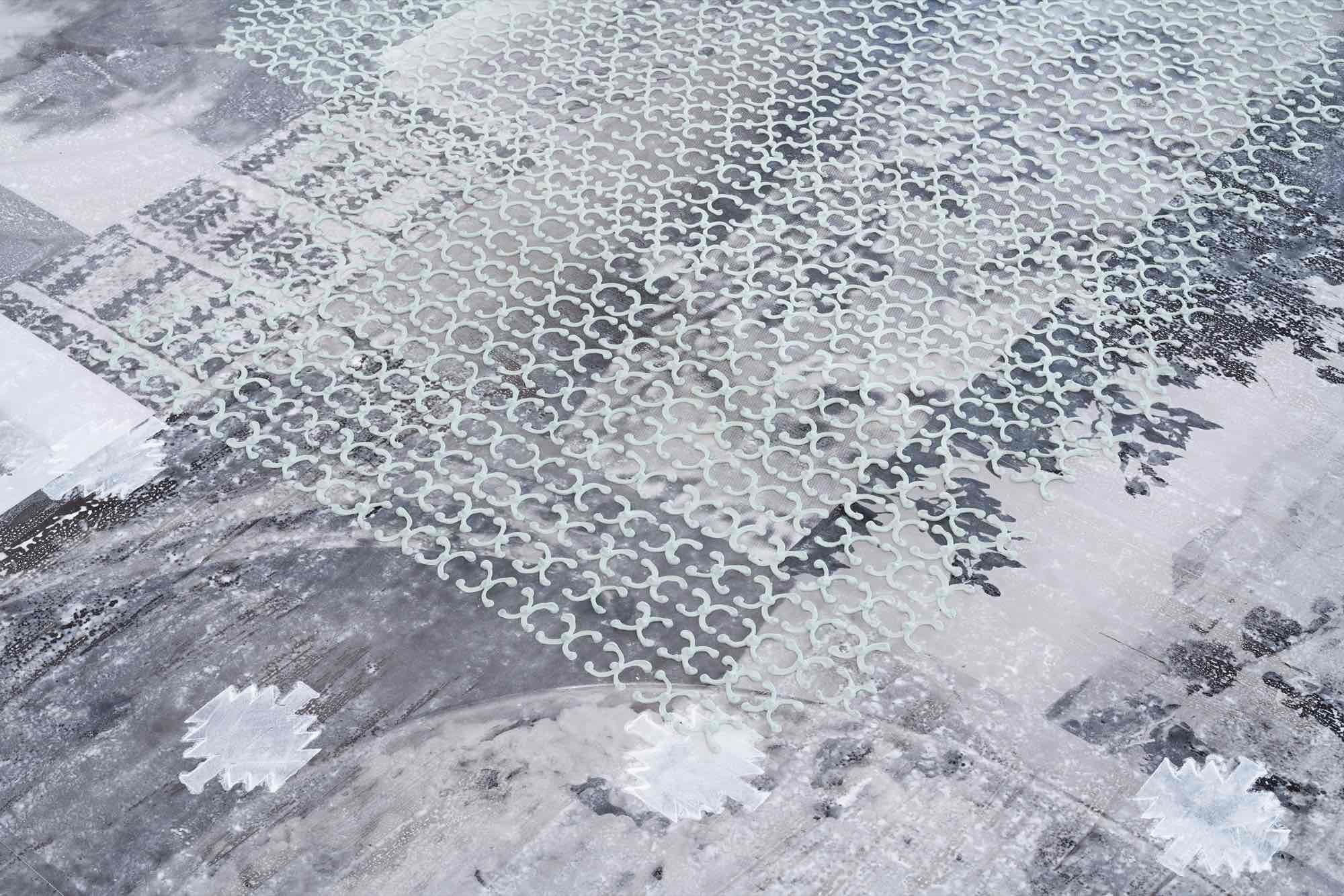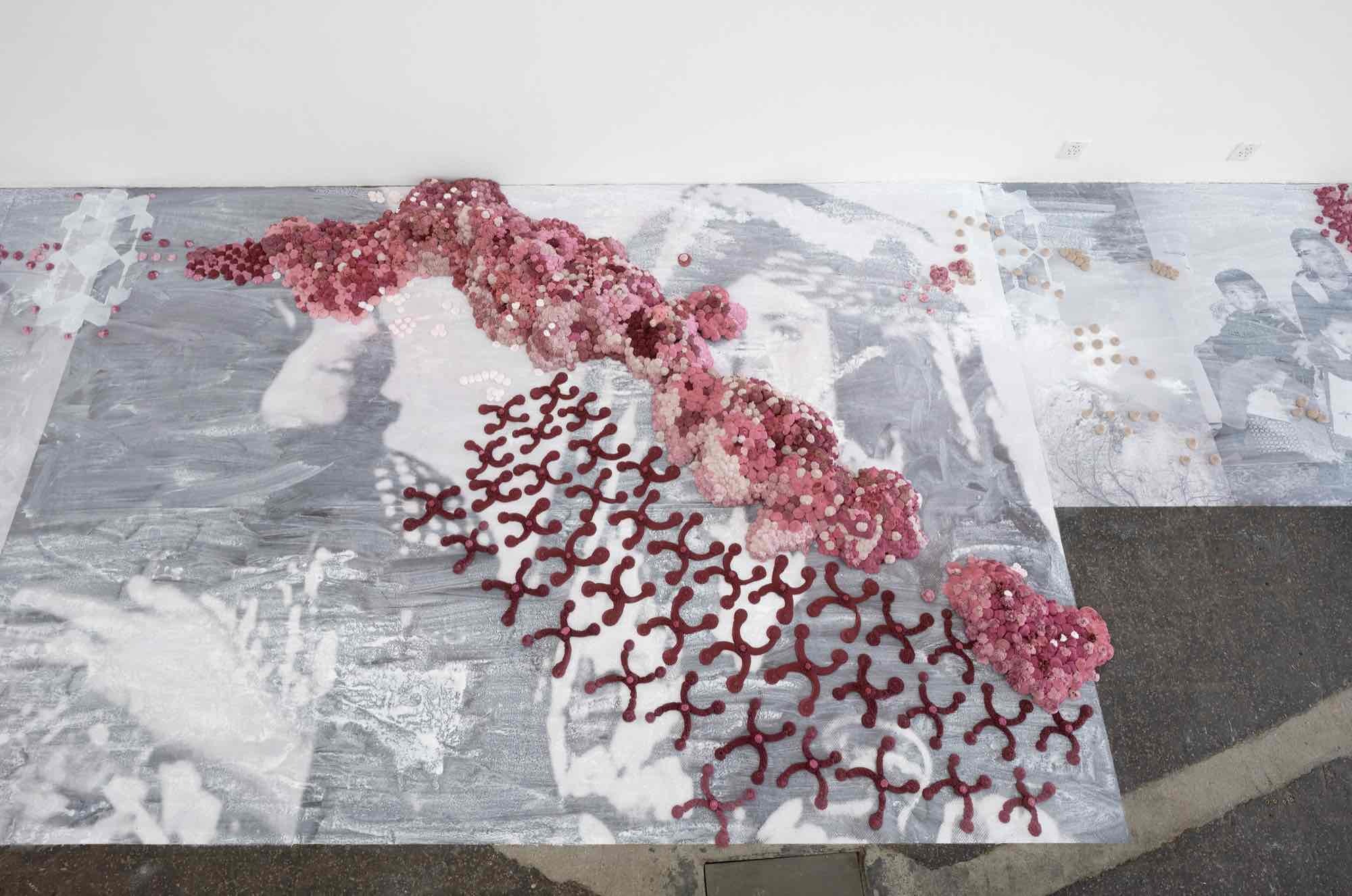Melike Kara
08 Jul - 15 Oct 2023
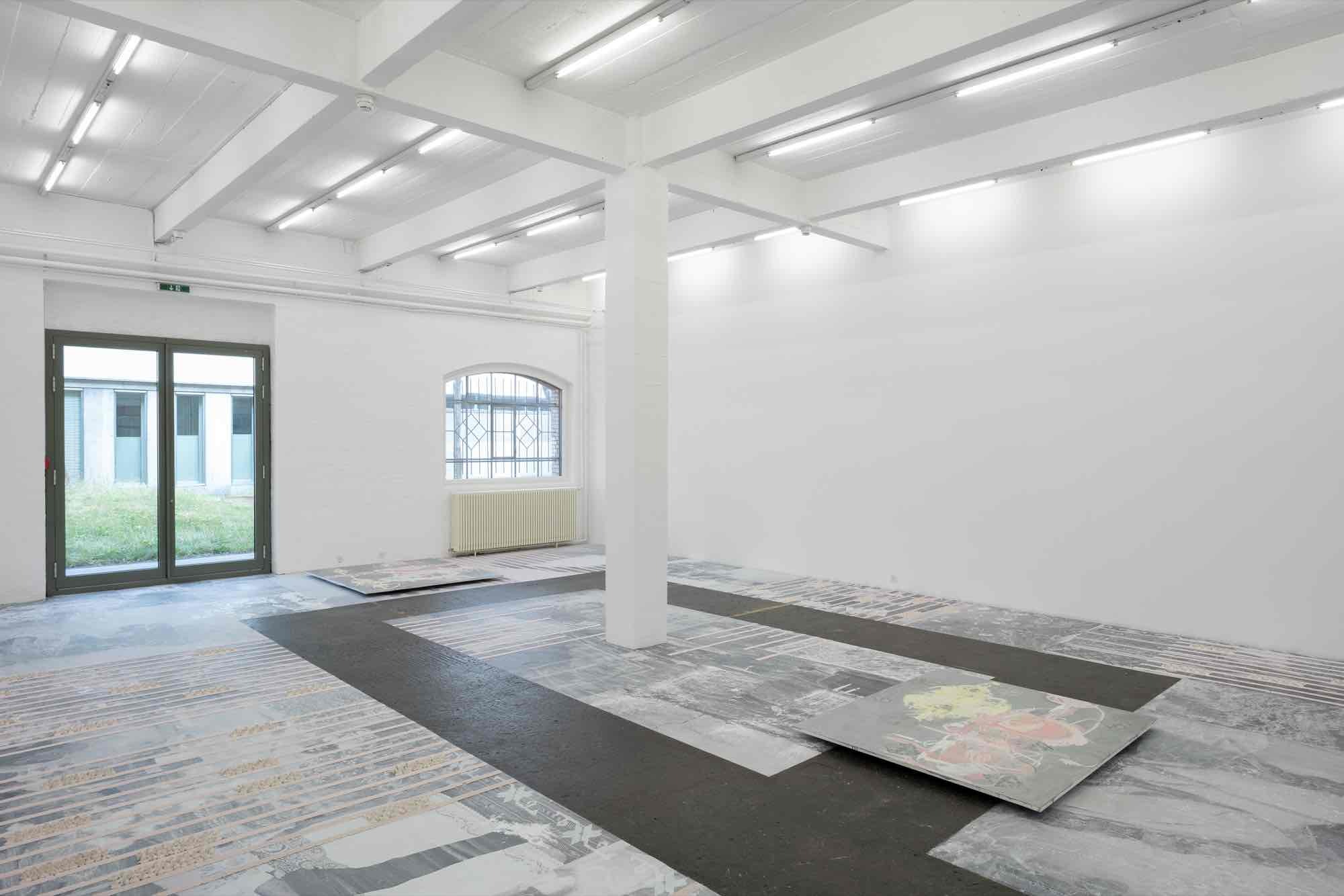
Melike Kara, «Emine`s Garden», exhibition view, 2023. With kars / goyan, 2023 (oil stick and acrylic on canvas, 180 x 150 cm, on the right) and dazkiri / tij, 2023 (oil stick and acrylic on canvas, 200 x 180 cm, in the back).
Photo: Kunst Halle Sankt Gallen, E. Sommer.
Photo: Kunst Halle Sankt Gallen, E. Sommer.
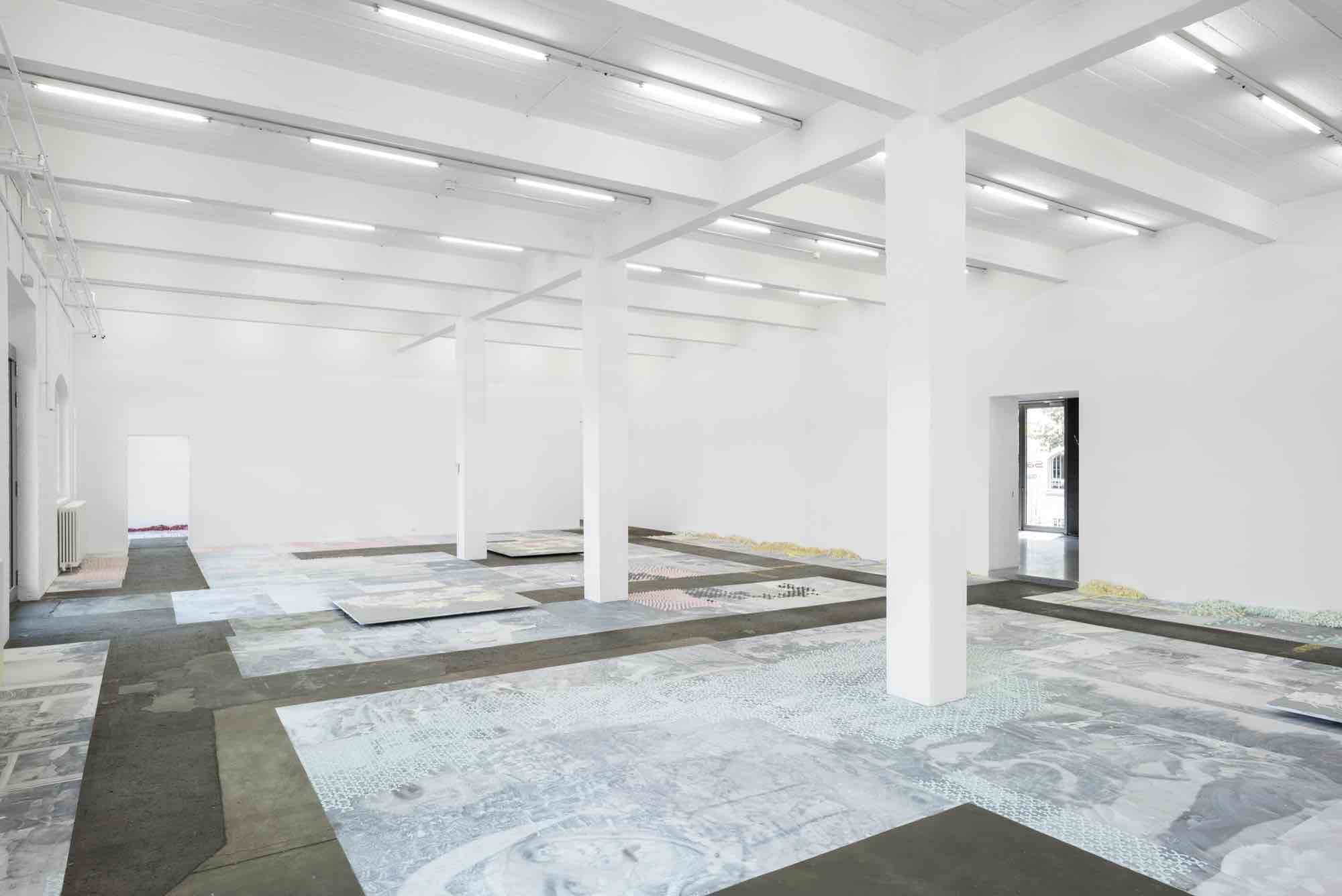
Melike Kara, «Emine`s Garden», exhibition view, 2023. With kars / tij, 2023 (oil stick and acrylic on canvas, 200 x 180 cm, on the left) and qasha`i / tij, 2023 (oil stick and acrylic on canvas, 220 x 200 cm, in the back).
Photo: Kunst Halle Sankt Gallen, E. Sommer.
Photo: Kunst Halle Sankt Gallen, E. Sommer.

Melike Kara, «Emine`s Garden», detail view, 2023. With kars / goyan, 2023 (oil stick and acrylic on canvas, 180 x 150 cm).
Photo: Kunst Halle Sankt Gallen, E. Sommer.
Photo: Kunst Halle Sankt Gallen, E. Sommer.
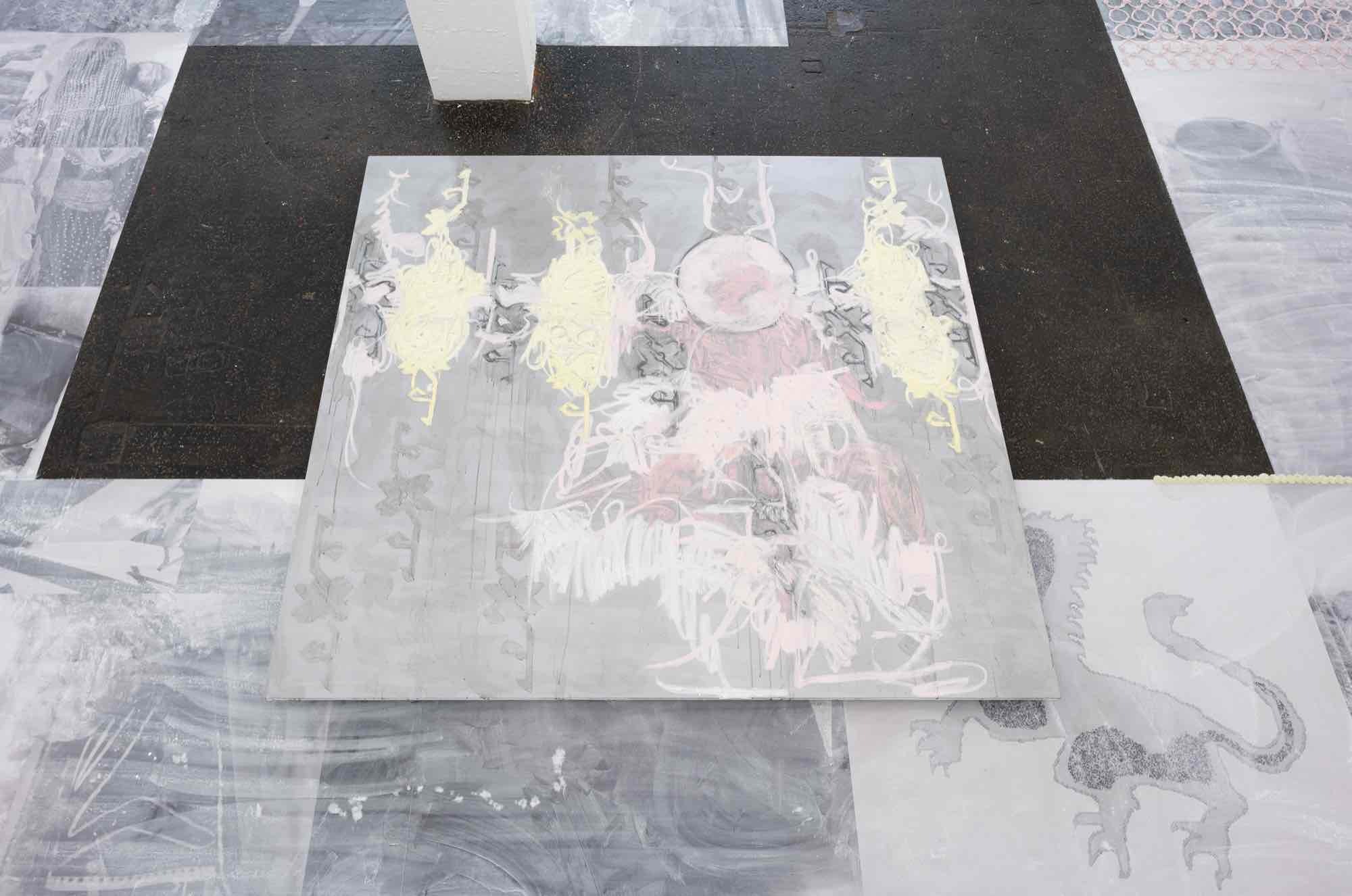
Melike Kara, «Emine`s Garden», exhibition view, 2023. With kars / goyan, 2023 (oil stick and acrylic on canvas, 180 x 150 cm).
Photo: Kunst Halle Sankt Gallen, E. Sommer.
Photo: Kunst Halle Sankt Gallen, E. Sommer.

Melike Kara, «Emine`s Garden», exhibition view, 2023. With qasha`i / tij, 2023 (oil stick and acrylic on canvas, 220 x 200 cm, on the left) and kars / tij, 2023 (oil stick and acrylic on canvas, 200 x 180 cm, on the right).
Photo: Kunst Halle Sankt Gallen, E. Sommer.
Photo: Kunst Halle Sankt Gallen, E. Sommer.
Melike Kara (*1985, lives and works in Cologne/DE) develops her painterly work alongside the writing of poetry and the production of sculptures, videos and other media. The experimental use of surfaces is a characteristic of her paintings, which are treated with thick oil pastels, for example, or the use of foreign materials such as textiles. In her first institutional solo exhibition in Switzerland, Kara continues her exploration of Kurdish traditions and questions of historicisation, tradition and community. She realises site-specific works in a large-scale installation that transforms the space of the Kunst Halle Sankt Gallen into her own visual archive.
The photographs stem from family members and Karas extended network of relationships, an archive that the artist is continuously compiling. Like a carpet, the photographs cover the floor of the Kunst Halle. Together with the paintings, in which Kara articulates her very own visual language, the installation reveals itself as a series of meditations on collective images. Through the collection and rearrangement of the material heritage, as well as the combination with gestural-abstract compositions, Karas personal gaze unfolds as an intimate narrative of her own family history and the visual culture of the Kurdish diaspora. The large-scale occupation of the space unfolds as an intimate and at the same time political gesture. Thus giving visibility to the disappearing population, whose culture is only maintained through informal channels and oral traditions, and to their history.
Drawing on various weaving techniques and customs, Kara abstracts, layers, and interweaves her family history with Kurdish tapestry motifs from different regions and tribes in the exhibition. The ambiguity between abstraction and figuration, individual and collectivity, which is inherent in these tapestries, is constituted in the spatial arrangement but also as a particularity of her paintings into a visual testimony of a collective visual language and at the same time the artist`s very own.
The photographs stem from family members and Karas extended network of relationships, an archive that the artist is continuously compiling. Like a carpet, the photographs cover the floor of the Kunst Halle. Together with the paintings, in which Kara articulates her very own visual language, the installation reveals itself as a series of meditations on collective images. Through the collection and rearrangement of the material heritage, as well as the combination with gestural-abstract compositions, Karas personal gaze unfolds as an intimate narrative of her own family history and the visual culture of the Kurdish diaspora. The large-scale occupation of the space unfolds as an intimate and at the same time political gesture. Thus giving visibility to the disappearing population, whose culture is only maintained through informal channels and oral traditions, and to their history.
Drawing on various weaving techniques and customs, Kara abstracts, layers, and interweaves her family history with Kurdish tapestry motifs from different regions and tribes in the exhibition. The ambiguity between abstraction and figuration, individual and collectivity, which is inherent in these tapestries, is constituted in the spatial arrangement but also as a particularity of her paintings into a visual testimony of a collective visual language and at the same time the artist`s very own.

